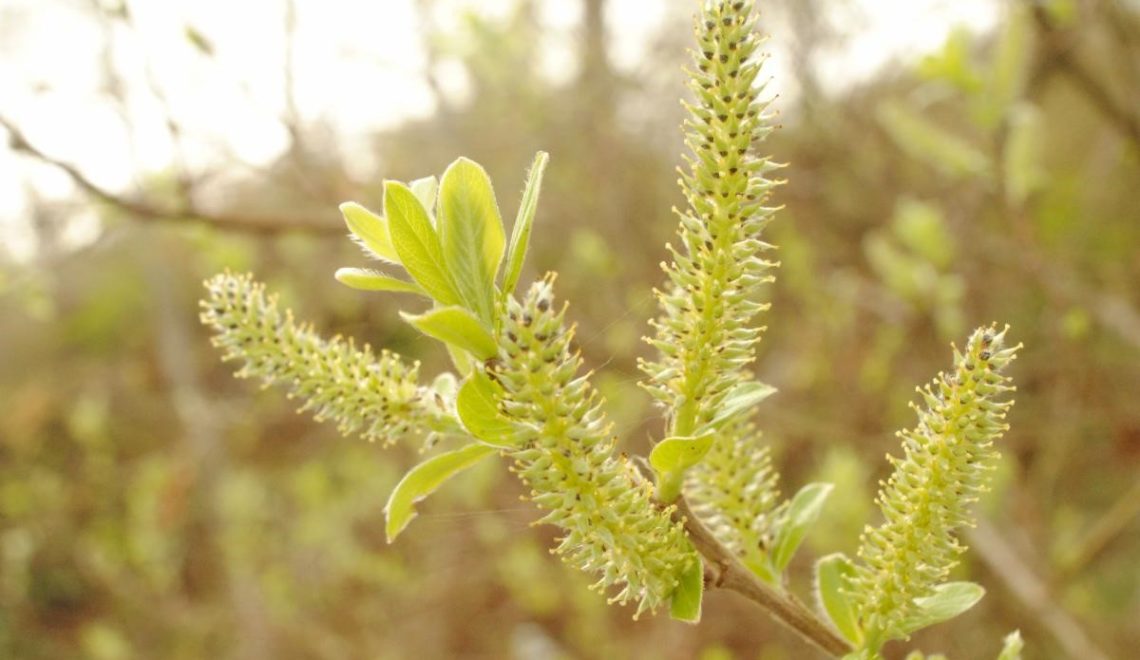
Spring Scavenger Hunt
The Olympic Peninsula is home to over 1,450 vascular plant species. The diversity of weather, landforms, soils, and elevation all affect the array of plants the region is capable of hosting.
While the extreme diversity might seem overwhelming to any amateur naturalist or newcomer plant enthusiast wishing to learn plant identification, early spring is a great time to start the journey!
To minimize competitive interactions for space and pollinators, plant species have evolved mechanisms for “temporal partitioning”: different species bloom at different times when the conditions are just right for their optimum growth and reproduction.
Early flowering species have evolved traits such as storing energy from the previous growing season to enable rapid growth right at the start of spring. Mid- and late- flowering species have evolved other strategies such as minimizing water loss to withstand the drier and warmer conditions of late spring/summer.
If you are just getting started learning the names of plants of the area, try to get to know some of the early blooming lowland species using our Signs of Spring Scavenger Hunt as a guide. All the plants listed below can be seen in bloom right now along the Olympic Discovery Trail in the sections between Sequim and Port Angeles. How many can you find?
Flowering Shrubs

Indian Plum (Oemleria cerasiformis) The early emerging elliptical shaped leaves take advantage of sunlight before overstory trees produce leaves and shade.
The small flowers in drooping clusters provide an important early season nectar source.Male and female flowers on different plants. Males often flower at an earlier age than females, females grow slower, and are the only ones that will bear fruit.

Red-flowering Currant(Ribes sanguineum) Another spring harbinger and early food source for hummingbirds, these red to pink flowers dangle from the plant in dense pendant clusters.

Salmonberry (Rubus spectabilis) You can find salmon berry near water, or at the bottom of a wet slope, often forming dense thickets. The flowers are hot pink, leaves have three leaflets, and twigs have scattered prickles.

Spring Edibles
You can learn a few plants, get some exercise and fresh air, and even stock up on greens for the week with these delicious and nutritious “weeds” that are abundant along the Olympic Discovery Trail right now. Throw them in soups, salads, omelet, or any other way you like to eat your greens.

Siberian Miner’s Lettuceor Candy Flower (Claytonia sibirica) This little beauty has opposite, stalkless leaves and flowers that are white to pink with 5 petals. The leaves are mild in flavor and taste good raw.

Chickweed (Stellaria media) non-native This widespread flower is native to Eurasia but has naturalized throughout the world to be used for ground cover, and as a vegetable crop for both humans and poultry. The five incised petals look like ten.

Stinging Nettle (Urtica dioica) Stinging Nettle often forms dense patches along streams, in drainage ditches, or in shady forest clearings. Look for the squarish stems that have opposite, heart-shaped leaves with serrated edges. It is actually best to harvest these leaves before the plant flowers, so now is the time!(Take the top 4-6 leaves as they are the most nutrient rich, and this does not kill the plant.)

Purple Dead Nettle (Lamium purpureum)non-native It is called dead nettle because of its resemblance to Stinging Nettle, but without the sting. This plant is actually in the mint family, or Lamiaceae. Look for square stems, fuzzy leaves, and purple tops with tiny pink flowers.
Others

Coltsfoot (Petasites frigidus) An early bloomer due to the flowering stems using reserves from the previous year. Commonly found on stream banks and often seen in the drainages along the highway.

Skunk Cabbage (Lysichiton americanus) Instead of producing sweet fragrances that attract sugar-loving pollinators like bees, Skunk Cabbage blooms before bees are most active, and emits a “skunky’ odor to attracts its pollinators, which are mostly scavenger flies. Look for skunk cabbage in wet areas.

If you would like to learn more about the plants of the area, join us for a walk in the serene, mossy, and magical area where the Dungeness River converges with the Gray Wolf River!
This hike will be focused on greeting the early spring flowers as they begin to wake up after a long winter. You will learn how to identify different species, look closely into nature, and enjoy the sounds, sights and smells of spring.

